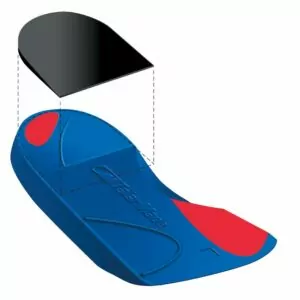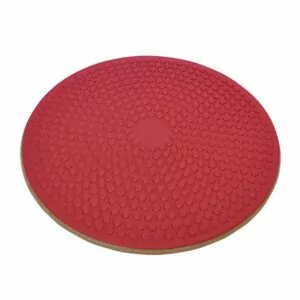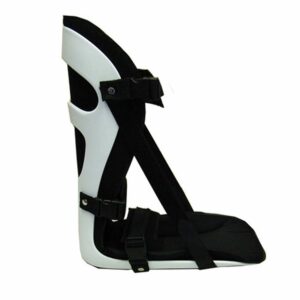Achilles and Heel Pain Diagnosis Guide
Updated:
Pain in the Achilles and heel region is a common clinical presentation particularly in individuals involved in repetitive weight bearing activity such as excessive walking, jumping or running sports. Occasionally sedentary individuals may also be affected. Symptoms may present suddenly due to a specific incident or gradually over time.
One common clinical presentation is the patient suffering from gradual onset Achilles pain typically as a result of overuse associated with excessive walking, running or jumping activities, the cause of which, is often degeneration and inflammation of the Achilles tendon (figure 1) i.e. Achilles Tendonitis.
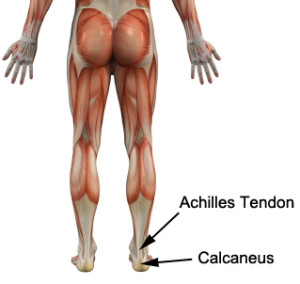
Figure 1 – Achilles and Heel Pain Anatomy
Patients presenting with sudden onset pain in the Achilles region are also common in clinical practice and often occur due to a specific incident such as a quick take off or sudden acceleration movement. In these instances an Achilles Tendon Tear is the most likely cause (figure 1).
Below are some of the more common causes of pain in the Achilles and Heel region with a brief description of each condition to aid diagnosis.
Conditions have been organised according to sudden or gradual onset and common or less common conditions for ease of use.
Find out what may be causing your Achilles and heel pain:
Sudden Onset Achilles and Heel Pain – Common Injuries
Achilles Tendon Tear
Partial tearing of the Achilles tendon associated with a sudden onset of pain in the tendon, usually due to a specific incident, such as a quick take off or sudden acceleration. Associated with pain in the Achilles tendon that may increase when performing a calf stretch (figure 2) or heel raise (figure 3), localised swelling and tenderness on firmly touching the tendon (figure 1).

Figure 2 – Calf Stretch (left leg)
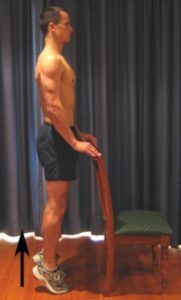
Figure 3 – Heel Raise
Less Common Sudden Onset Injuries
Achilles Tendon Rupture
Complete rupture of the Achilles tendon associated with a sudden onset pain in the Achilles tendon (figure 1) usually due to a specific incident such as a quick take off or sudden acceleration followed immediately with marked loss of function. A snap or tear may be audible during injury and may be associated with the feeling of ‘being hit in the back of the leg’. Significant weakness when attempting a heel raise (figure 3), swelling and tenderness on touching the tendon is typically present.
Fat Pad Contusion (Bruised Heel)
Pain from bruising under the heel (calcaneus – figures 1, 4) usually due to a direct impact such as landing on a hard surface. Typically associated with pain on firmly touching the affected region and on placing weight through the heel. In some cases, visible bruising may be evident.
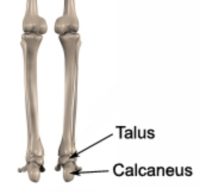
Figure 4 – Calcaneus and Talus
Calcaneus Fracture
Fracture of the heel bone (calcaneus – figures 1, 4) usually arising from a traumatic, direct impact such as landing on a hard surface from a height. Associated with severe pain (especially when placing weight through the heel) and pain on firmly touching the affected bone.
Gradual Onset Achilles and Heel Pain – Common Injuries

Members Only ContentBecome a PhysioAdvisor Member to gain full access to this exclusive content. For more details see Become a Member. Already a member? Login Now
Less Common Gradual Onset Injuries

Members Only ContentBecome a PhysioAdvisor Member to gain full access to this exclusive content. For more details see Become a Member. Already a member? Login Now
Achilles and heel pain diagnosis
A thorough subjective and objective examination from a physiotherapist is usually sufficient to diagnose the cause of Achilles and heel pain. Investigations such as an X-ray, ultrasound, MRI, CT scan or bone scan are often required to confirm Achilles and heel pain diagnosis and rule out other injuries.
Find a Physio for Achilles and heel pain
Find a physiotherapist in your local area who can assist with Achilles and heel pain diagnosis and treatment.
More Information
- View Calf Stretches.
- View Calf Strengthening Exercises.
- View Ankle Stretches.
- View Ankle Strengthening Exercises.
- View Balance Exercises.
- View detailed information on How to use Crutches.
- View detailed information on when to use Ice or Heat.
- View detailed information on Do I need orthotics?
Physiotherapy products for Achilles and heel pain
To purchase physiotherapy products to assist with rehabilitation click on one of the above links or visit the PhysioAdvisor Shop.

Link to this Page
If you would like to link to this article on your website, simply copy the code below and add it to your page:
<a href="https://physioadvisor.com.au/injuries/achilles-heel”>Achilles and Heel Pain Diagnosis Guide – PhysioAdvisor.com</a><br/>PhysioAdvisor provides an Achilles and heel pain diagnosis guide for patients suffering from achilles and heel injuries created by experienced physiotherapists.
Return to the top of Achilles and Heel Pain Diagnosis Guide.

